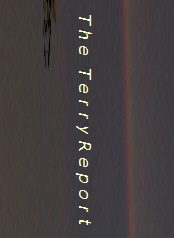|
The scanners+pat downs have only been employed for three weeks on a wide scale, so the controversy actually grew rather rapidly. Second, the big push toward fighting them came from two important sources: the pilot's union and websites calling for a boycott. Last week, two pilot's unions told their members that they should never go through the X-ray machines or submit to an "enhanced pat down". This news went up like a rocket on the 4th of July, but it wasn't picked up and placed into the general narrative until the protests started to mount.
The main difference this time is that there was audio and limited visual documentation of the confrontation with TSA. Once this went viral, the national news outlets wanted to cover it. In the case of television, they suddenly had something to show. That made all the difference.
I have witnessed many people being mistreated and have been mistreated myself at "security" checkpoints, but I had no way to protest. The TSA claims that it is illegal to photograph inside the screening area and cell phone cameras were not available during the time when I was a most frequent flyer. Besides, in the national panic atmosphere that struck the country after 9-11, any individual trying to make protest would be told, by everyone, to shut up and sit down, if not worse. A very large segment of the public was deeply frightened by 9-11, in part because there was visual evidence to look at: airliners crashing into buildings. In the history of aviation since 1903, we have had almost no actual footage of a commercial airliner crashing (the only one I can recall crashed into the ocean off Africa). It is one thing to know that airliners can crash, another to see it and have it replayed hundreds of times. As an experienced flyer with over 500,000 miles in the air and some pilot training, I was not frightened by the images, but I understand why millions of people were. In fact, I went back to flying less than a month after 9-11.
News organizations operate on a herd instinct. If only one outlet reports something, it is not considered real news because only those readers or viewers will know about it. Places where news is gathered and presented are not centers of independent thinking and original analysis. Indeed, since most “news” originates with the AP wire service, major newspapers like the NY Times and PR people (like the spokesman at the White House, Gibbs), news is a derivative product. Many editors and producers judge how well they did on a given day as to whether they were in line with what others considered the big stories to be, not what they, individually, thought was important.
News is a social concept that involves wider distribution. I watched very carefully this week as this story brewed up. On the first nights, the protests were given little and sometimes unfavorable coverage. NBC News, for one, always included something positive about the TSA or public opinion to "balance" its reports. By last evening, Friday, the total tone had changed, because the national news outlets suddenly realized that it was a serious issue with a massive ground swell of anger. It was also the combination of the scanners with enhanced pat downs that put this over the top. The scanners alone would have gotten little notice, but touchy people’s genitals in the name of security is a, ah eem, a sensitive subject matter.
The pilot's brought this to the fore, but only for the purpose of looking after themselves, not helping the passengers. A female pilot for Continental stopped flying and filed a law suit against the TSA, plus the aforementioned union action. Without the pilot's into the mix, this story would likely have been a one day wonder. Add in the audio from California with the planned Opt Out day, plus the photos from the Denver airport, and you really had a big story brewing up strong and fast. My guess is the television networks have people out on this story today (Saturday), even though there is likely to be no new development to report.
The danger now, for those who think that x-rays and aggressive pat downs are very bad idea, is that the story will fade from public view as quickly as it rose this past week. Without something new to drive it, news organizations will quickly lose interest and the budding mood of protest could be lost.
Doug Terry, 11.20.10
|
|
























































































































































































































